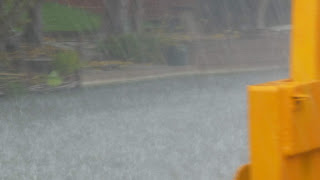Today, we continued our testing plan which commenced two weeks ago, albeit just for a short period.
Before any dredging is attempted, it is important that we understand the optimum deployment of the legs, before, during and after use. From this the operating and training procedure can be developed.
Without hydraulic drive to the legs, it is possible to pull the levers and let them descend under their own weight to the canal bed. This is a good way to discover the profile of the canal bed beneath you. Having done that, they can each be driven a little harder into the silt/clay.
During slewing deployment of the boom, the rocking moments of the great metal mass tends to dig the feet in further. This needs compensating for during the first four or five traverses. It is a case of being aware of the rate of tilt movement once the boom is angled away from the craft. Eventually, the footing becomes more secure and further boom swings can continue with confidence.
The feet on Patricia can be rotated 90deg to point outwards from the hull. This effectively makes the craft about a metre wider. The above tests were repeated with all four legs in this configuration to compare stability.
The improvement is quite noticeable, especially if it is necessary to slew the boom at right angles to the boat. It can be a bit fiddly deploying them, especially if the canal bed is quite close to the boat bottom. We have an idea for a far better tool for doing this, which the lads at WD could fabricate for us some time. A drawing is needed first though.
Lifting the feet has to be done carefully. If one has become a bit buried, then it will not come up in a hurry. Applying a slight pull and letting the buoyancy of the boat work against the mud slowly extracts it without any drama
One thing that we needed to do to assist in the next phase of testing actual dredging, was to point Patricia facing east as that will work more conveniently with the activities of No.5. Mid afternoon we headed down Ryeford Double Lock and managed to turn her at the widest point just by the landing stage.
Shortly after departing the top lock, the heavens opened to the cacophony of thunder and for a few minutes the decks were pelted with hail stones.
As time goes by, we get to spot small improvements that can be made, when time permits. A productive and satisfying days work, punctuated at the end by a shot of grease to the prop' shaft..






